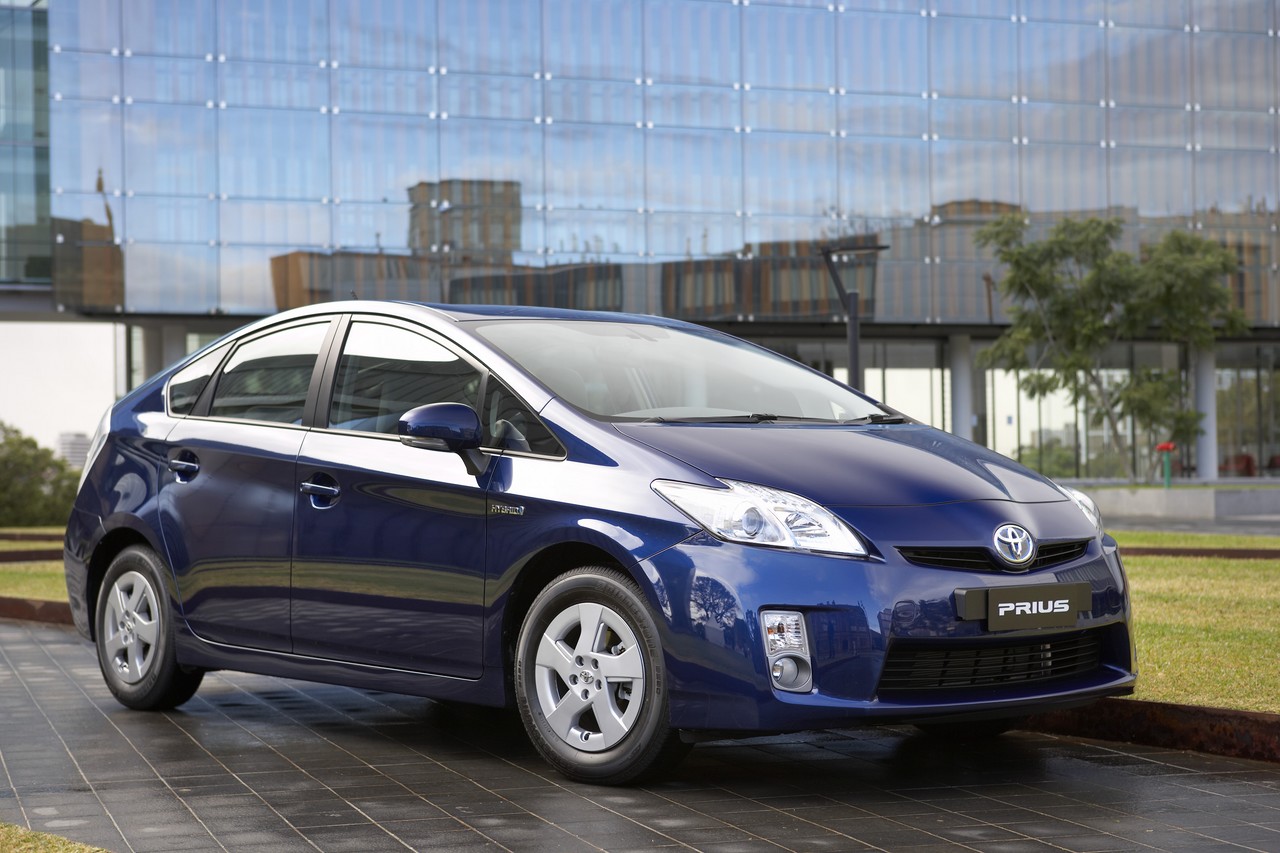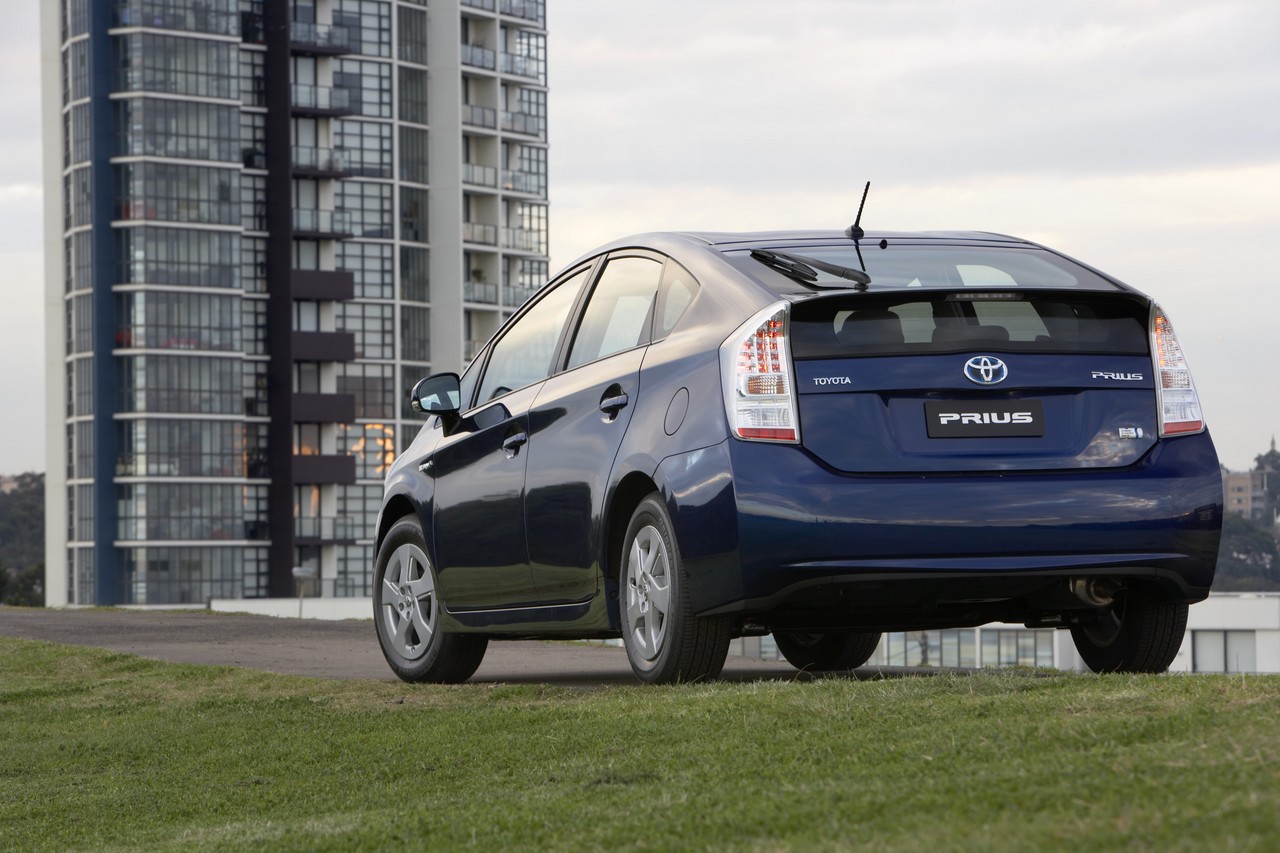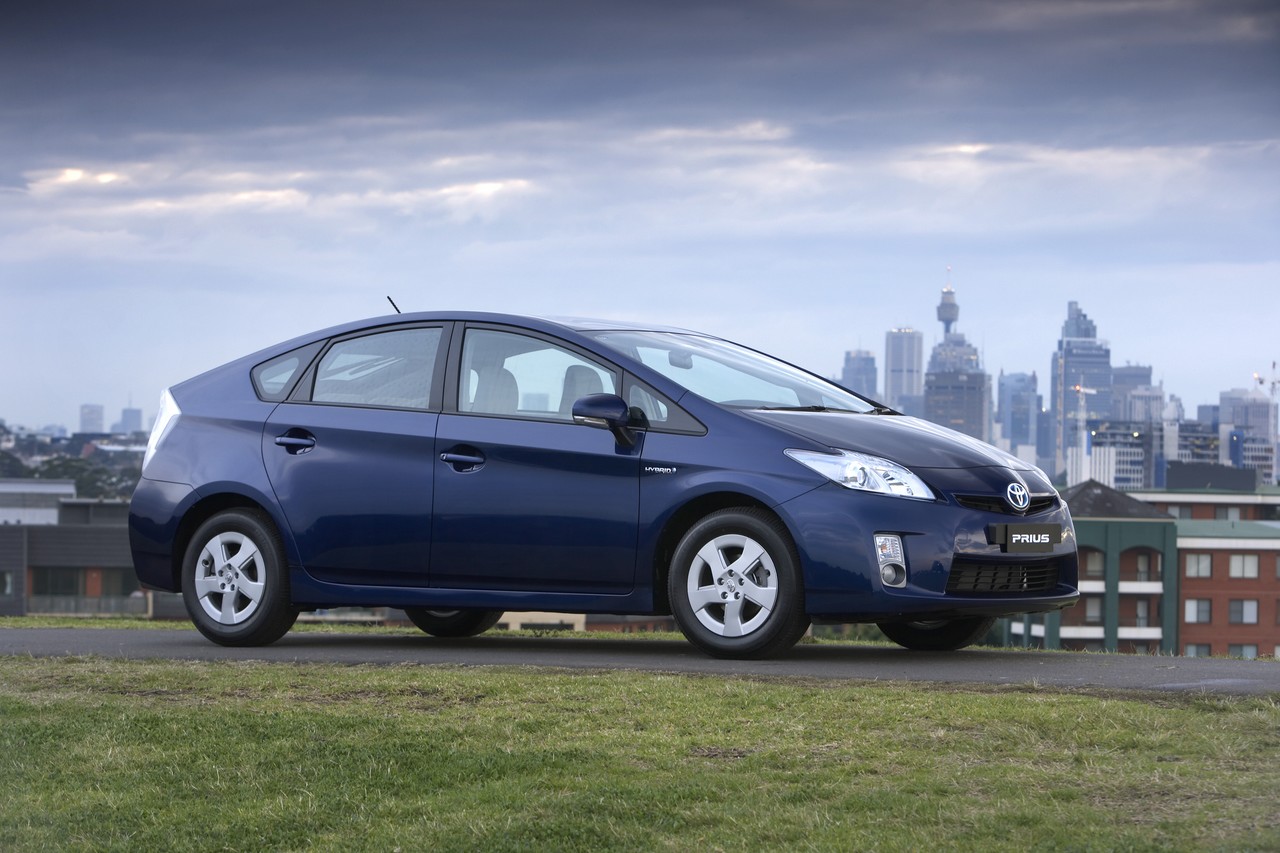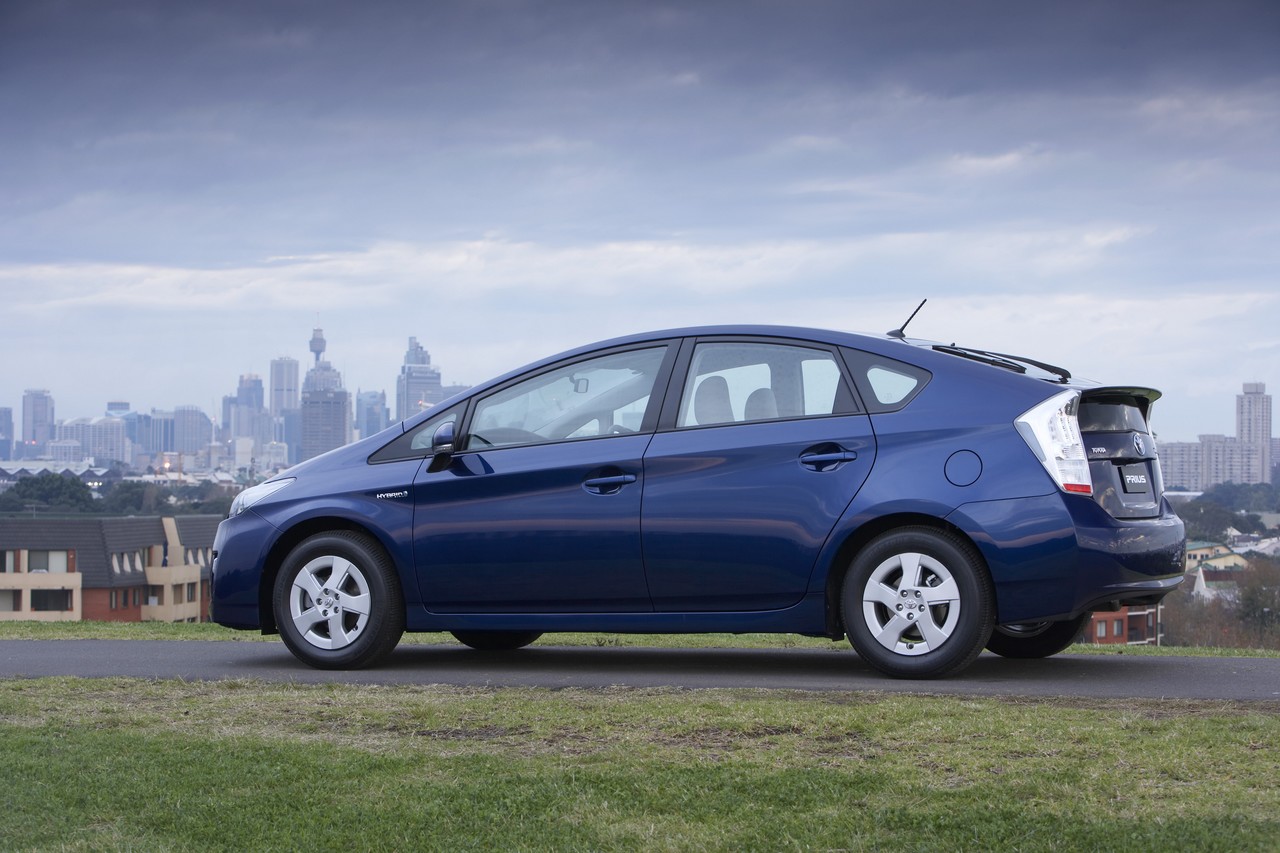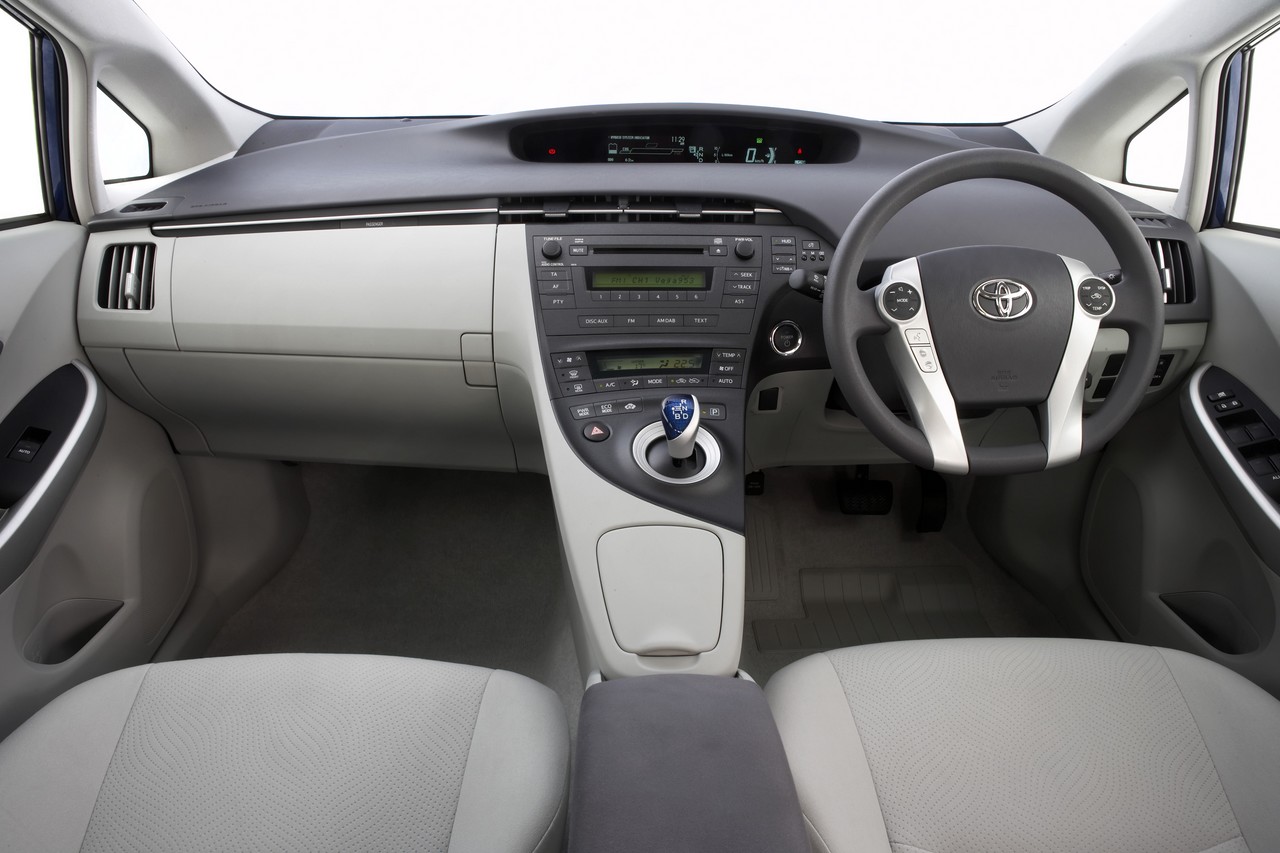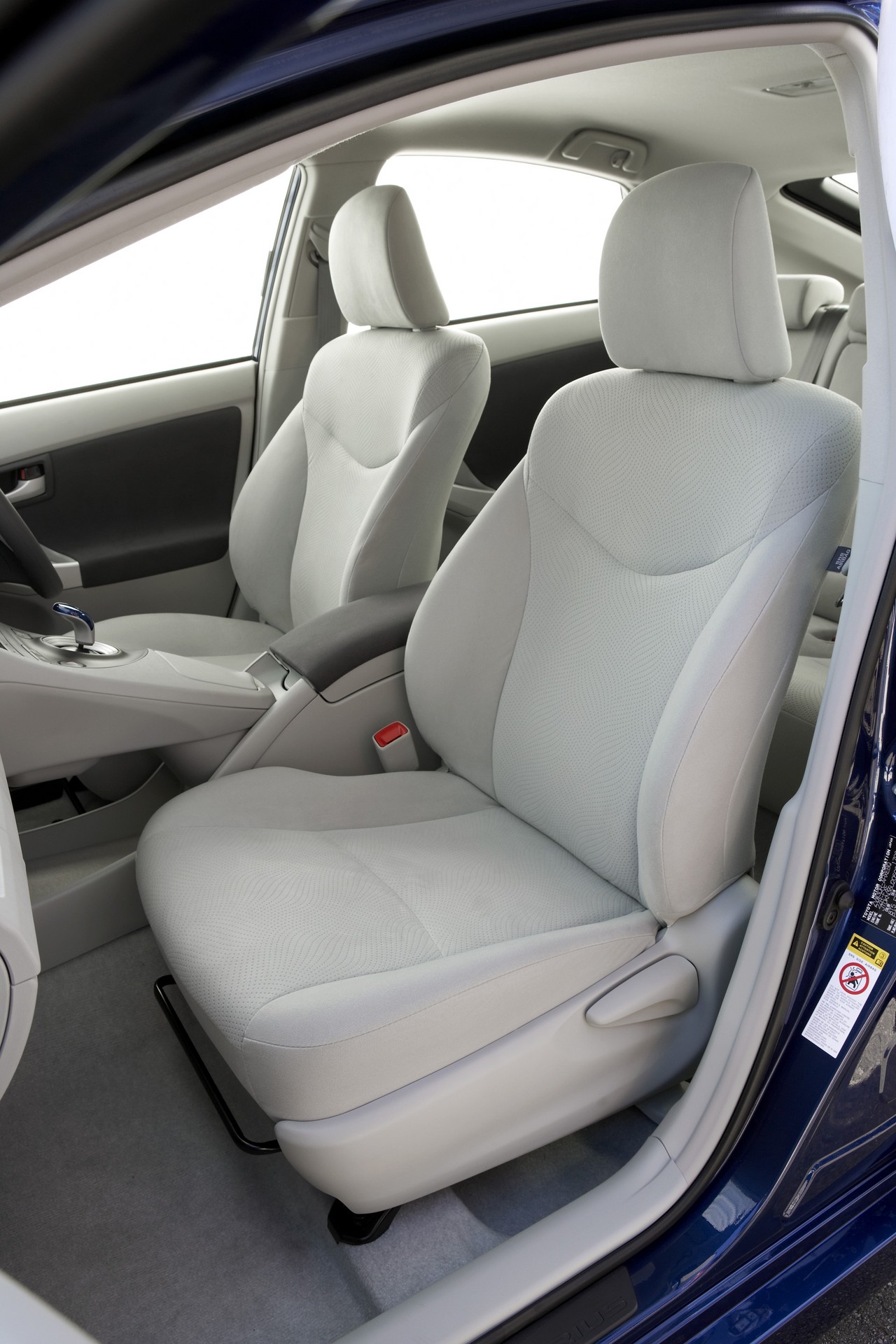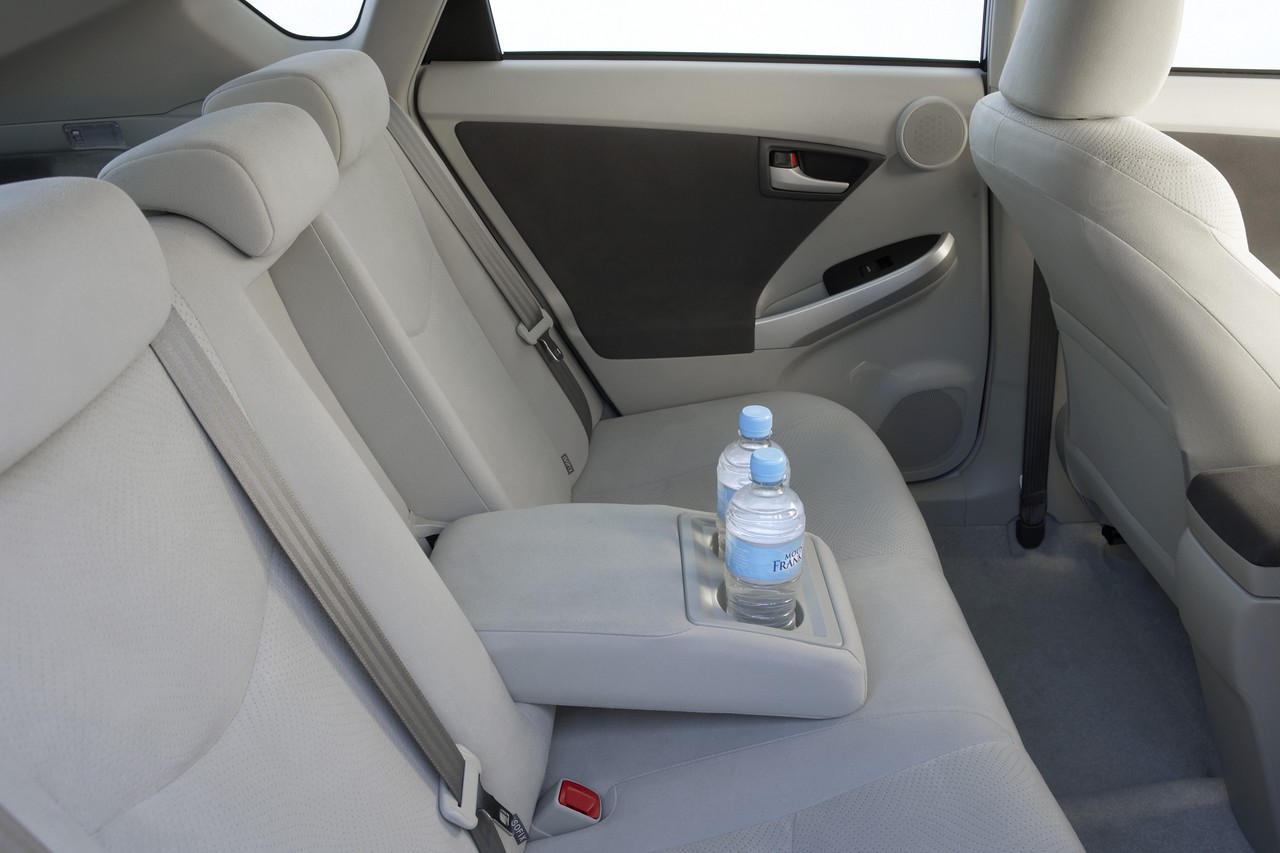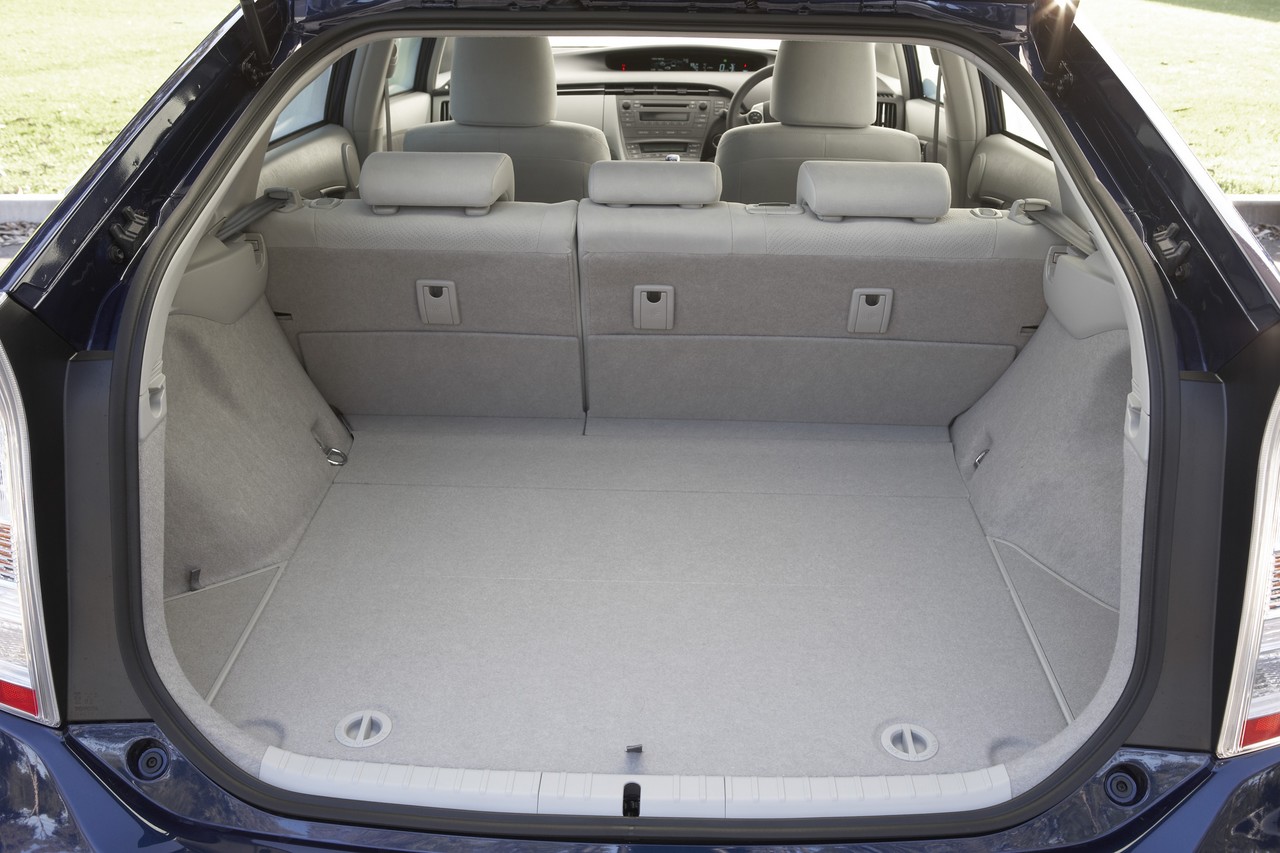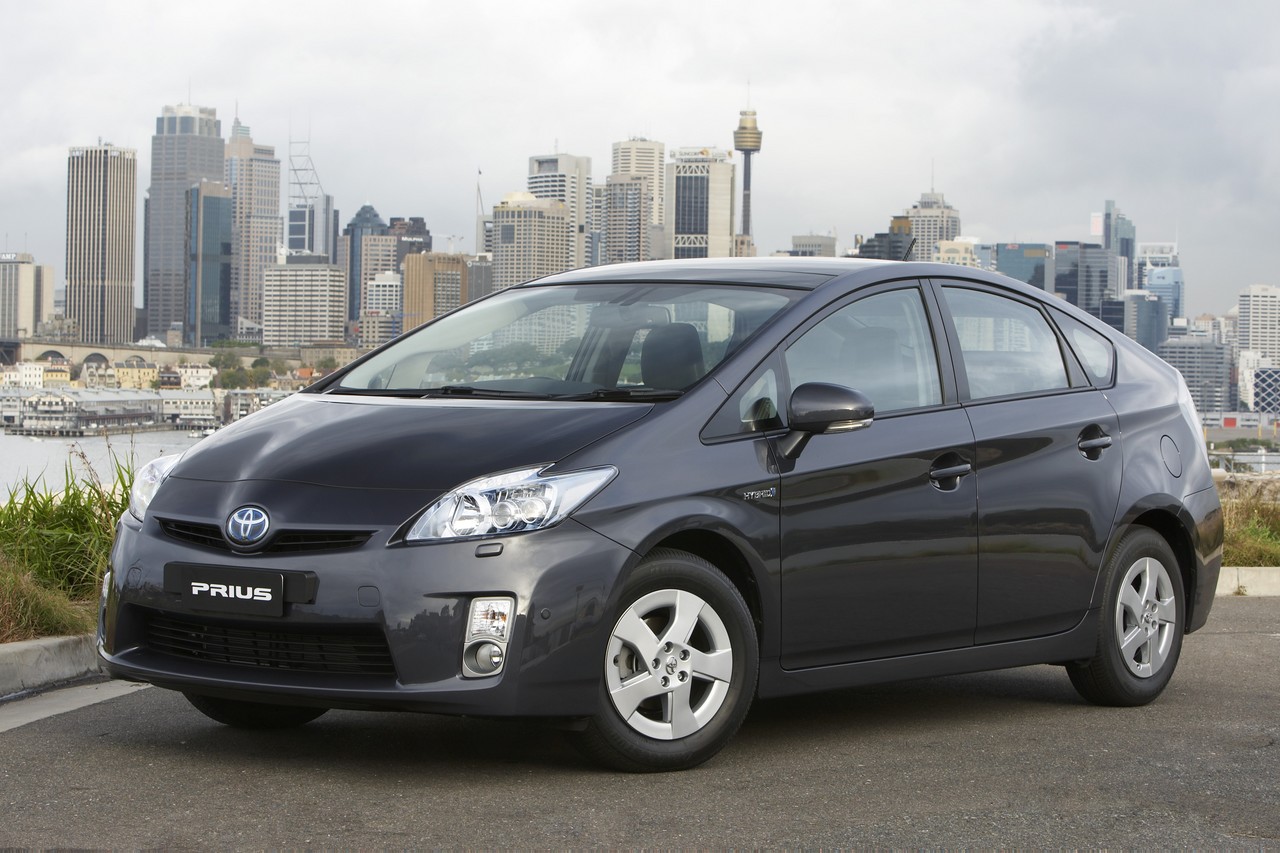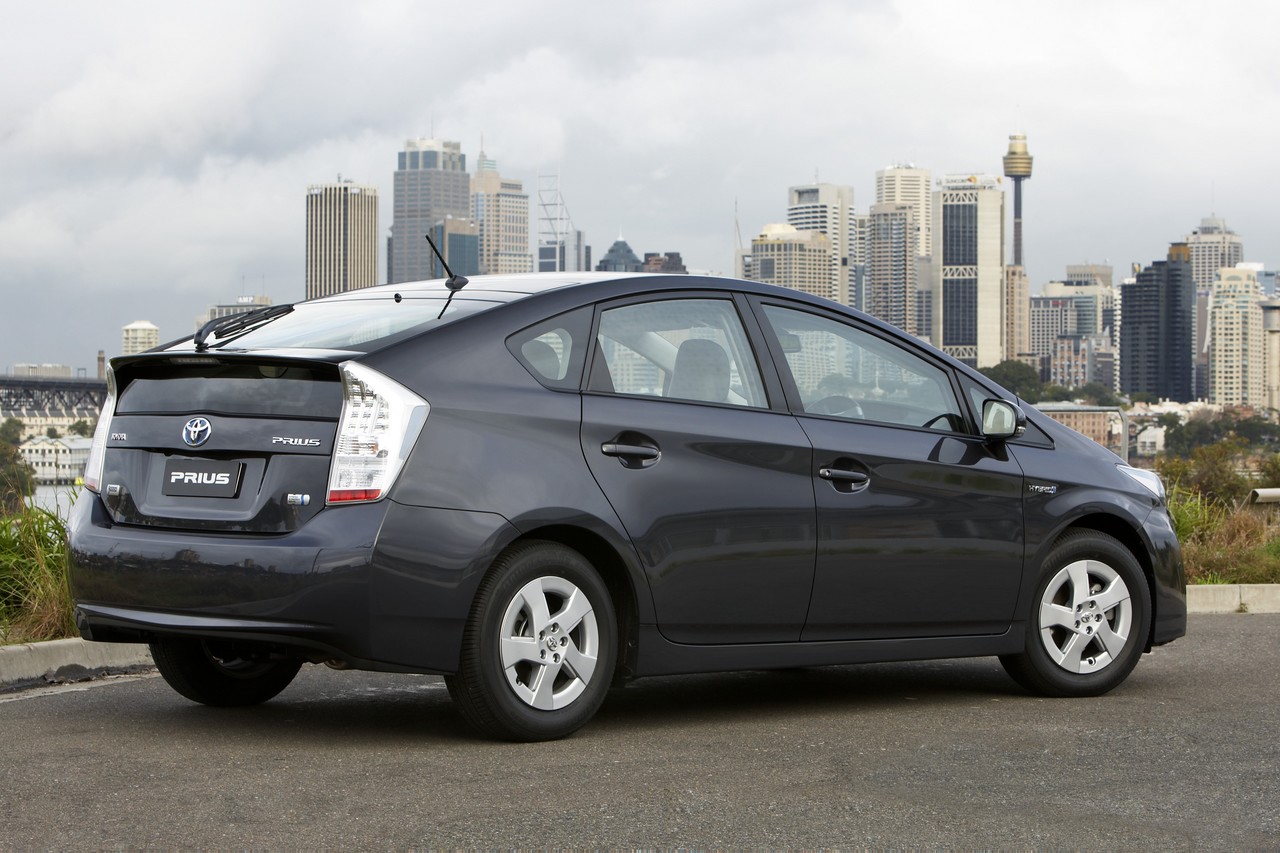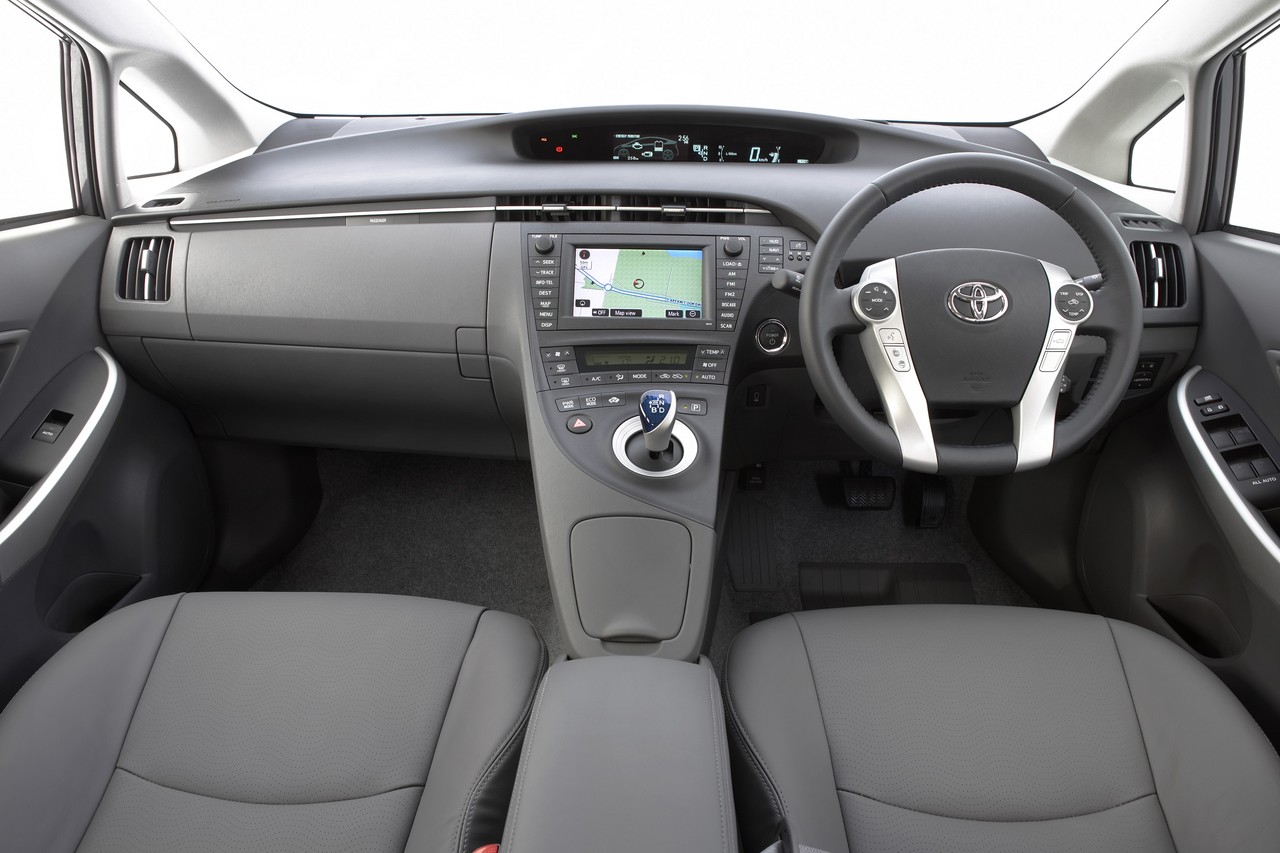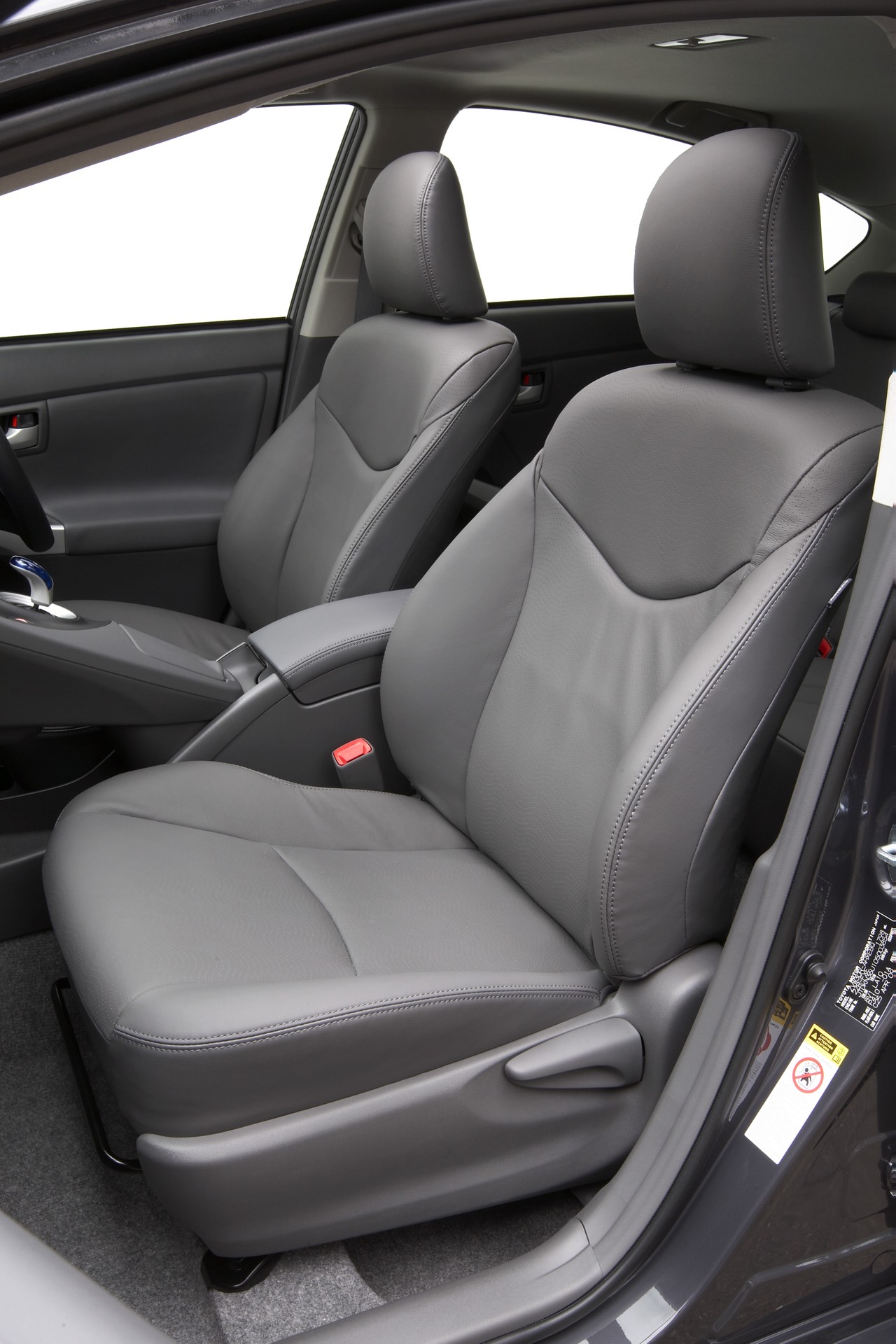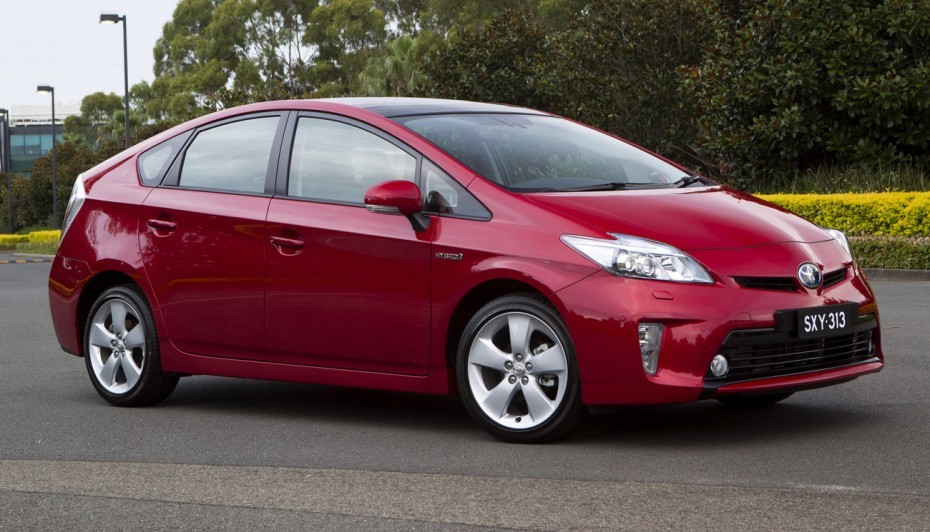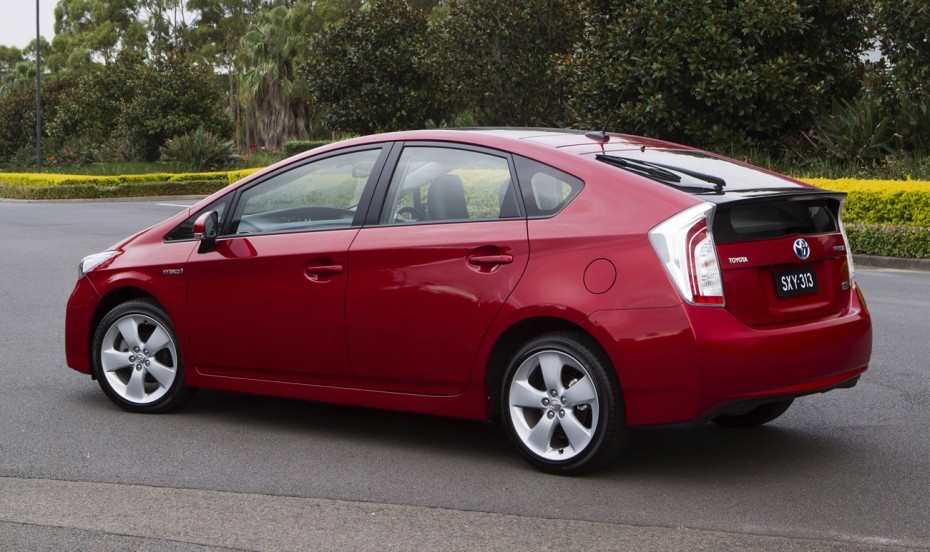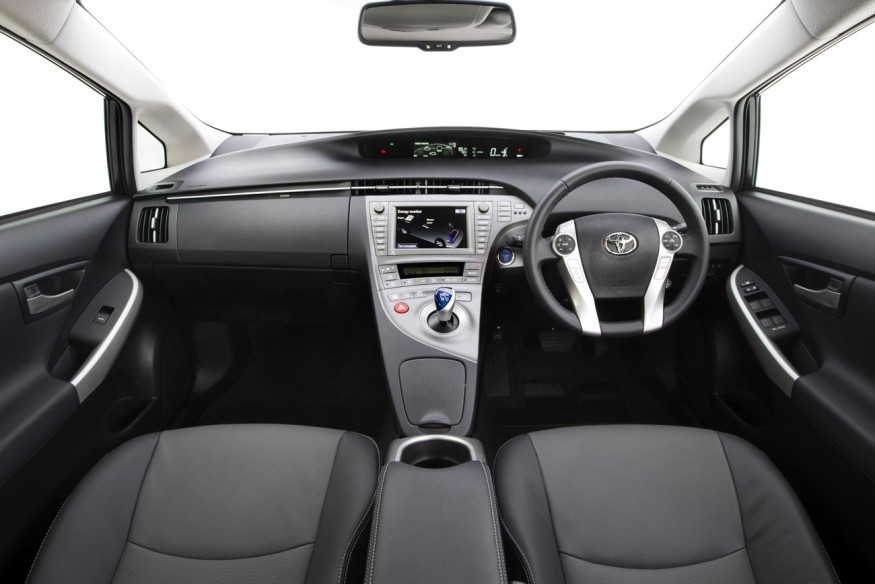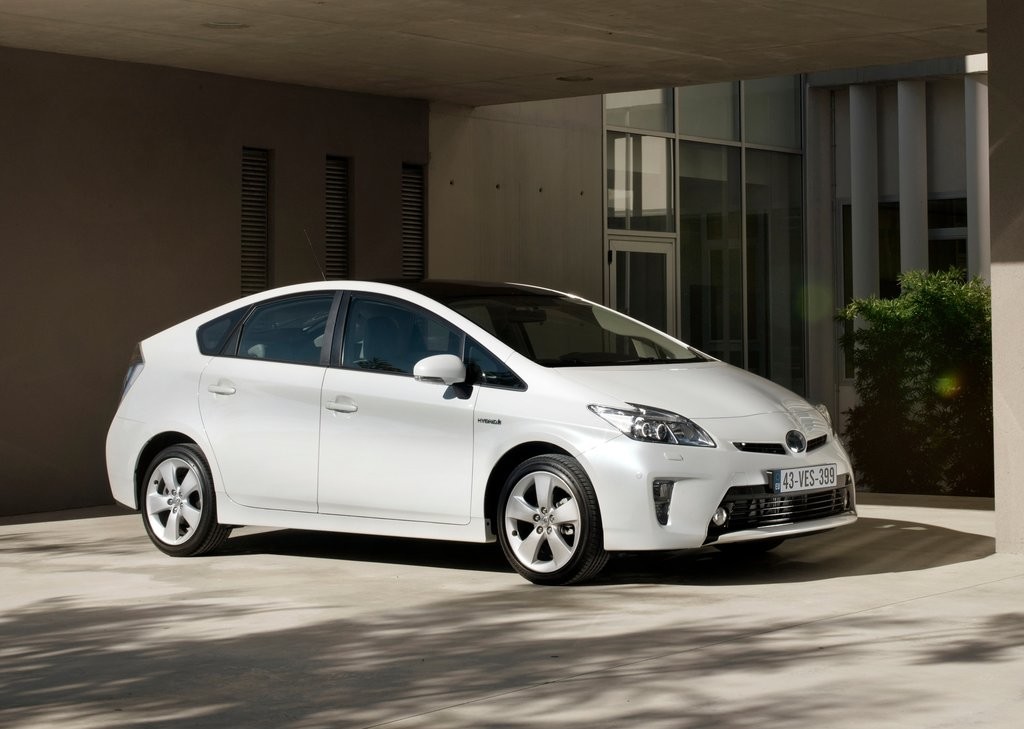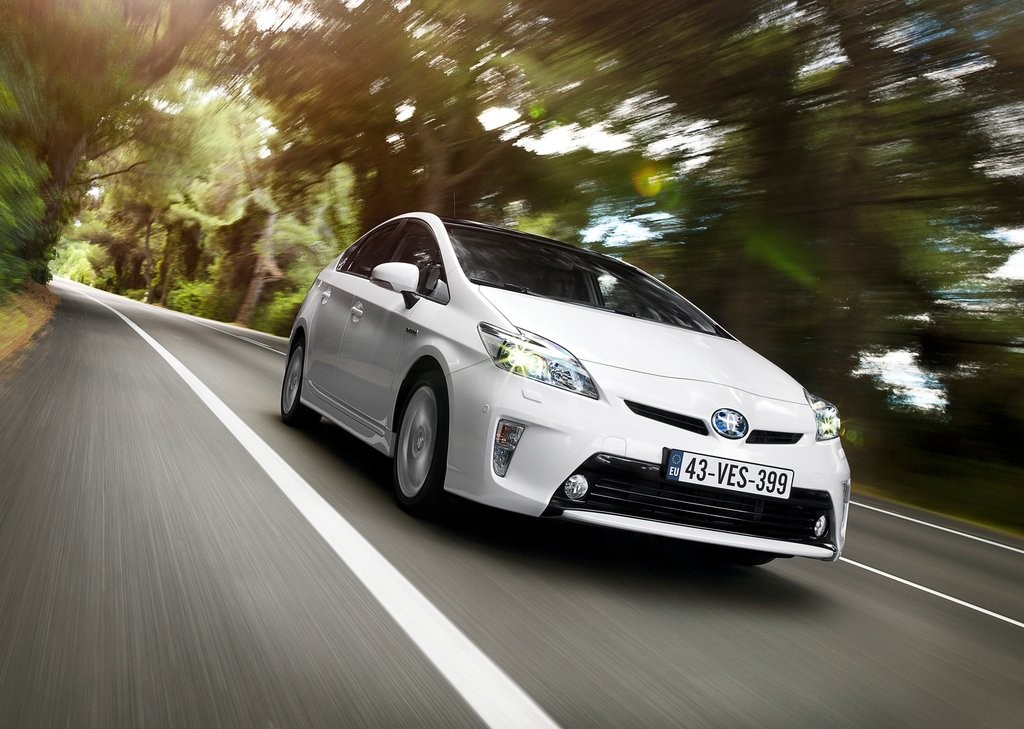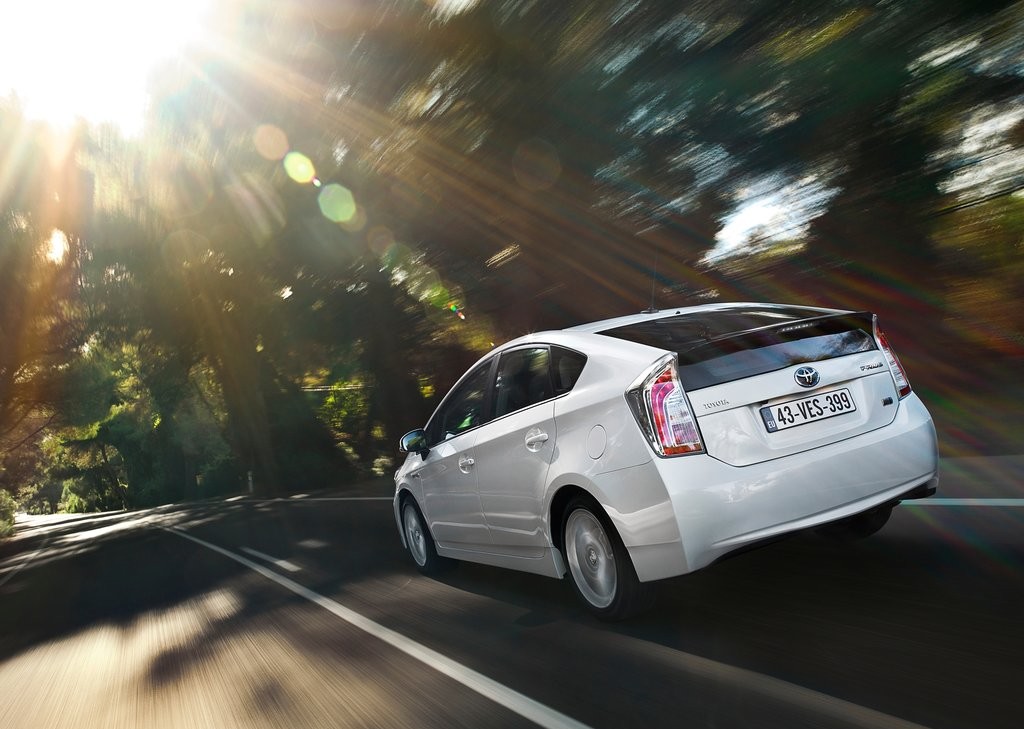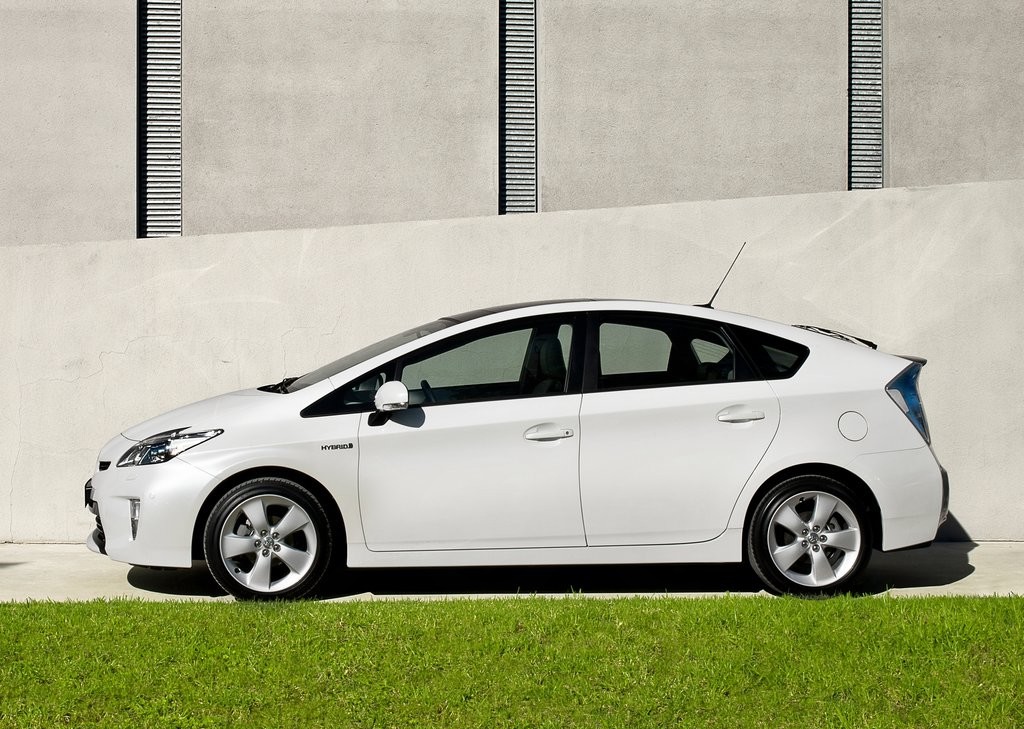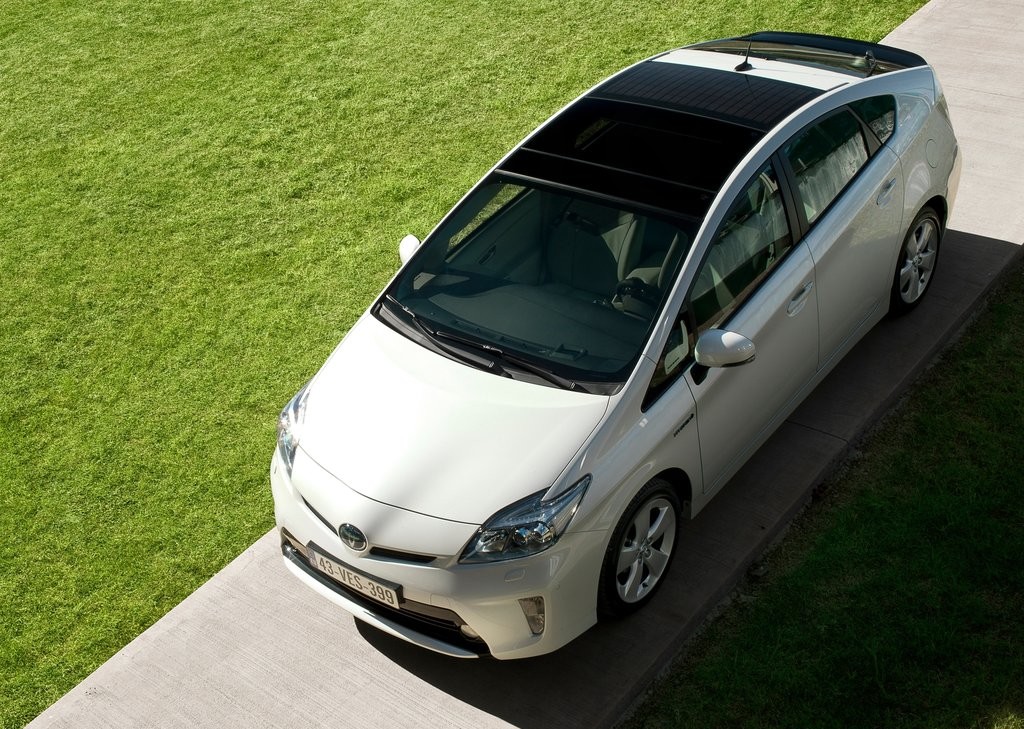
- Fuel-efficient and refined hybrid powertrain
- Comfortable ride and competent dynamics
- Comfortable front seats
- Well-weighted steering
- Hard interior plastics
- Tyre noise
- Poor rear visibility
Review: Toyota XW30.I Prius (2009-12)
Overview
Released in July 2009, the Toyota XW30 Series I (XW30.I) Prius was a five-door hybrid liftback. Manufactured in Japan, the XW30 Prius was powered by Toyota’s 1.8-litre 2ZR-FXE Atkinson cycle four-cylinder engine and a permanent magnet AC electric motor which drew power from nickel-metal hydride batteries. Power was directed to the front wheels via a continuously variable transmission.
2ZR-FXE engine
The 1.8-litre 2ZR-FXE engine had a die-cast aluminium alloy block, an alloy cylinder head, multi-point fuel injection, double overhead camshafts, four valves per cylinder, Toyota’s ‘Variable Valve Timing with intelligence’ (VVT-i), cooled exhaust gas recirculation, direct ignition and a compression ratio of 13.0:1. As an Atkinson cycle engine, the 2ZR-FXE had a higher expansion ratio than a conventional Otto cycle engine, making the expansion stroke longer than the compression stroke.
Hybrid operation
When stationary or coasting, the petrol engine would switch off and almost seamlessly restart when required. Energy not required for propulsion was converted to electricity and regenerative braking also enabled kinetic energy to be converted into electric energy; similarly, a gear lever enabled the driver to select ‘B’ for engine braking. The Prius featured four driving modes: ‘Normal’, ‘EV’ (for electric power only up to 50 km/h and up to 2 km), ‘ECO’ (for maximum economy) and ‘Power’ (greater throttle response).
Over the ADR 81/02 combined cycle, the XW30 Prius achieved fuel consumption of 3.9 litres per 100 km. However, the XW30 Prius required 95RON premium unleaded petrol or higher.
Dimensions
Compared to the XW20 Prius , the XW30 Prius was 15 mm longer (at 4460 mm), 20 mm wider (1745 mm), the same height (1490 mm) and had the same length wheelbase (2700 mm), while its drag coefficient was 0.25 Cd.
Suspension
The XW30 Prius had MacPherson strut front suspension with L-shaped lower arms and torsion beam rear suspension with two trailing arms.
| Details | Trans. | Peak power | Peak torque | |
|---|---|---|---|---|
| Petrol engine | 1.8-litre Atkinson cycle petrol I4 (2ZR-FXE ) |
CVT | 73 kW at 5200 rpm | 142 Nm at 4000 rpm |
| Permanent magnet AC electric motor | 650-volt nickel-metal hydride battery | 60 kW | 207 Nm | |
| Combined: | 100 kW | N/A | ||
Safety equipment
Standard safety equipment for the Toyota XW30.I Prius included dual front airbags, a driver’ s knee airbag, front side airbags, full-length curtain airbags (i.e. for front and rear occupants), ABS, brake assist, electronic brake force distribution, emergency braking lights, electronic stability control, traction control, active front seat head restraints and front seatbelts with pretensioners and load limiters.
The Toyota Prius i-Tech was further equipped with a pre-collision safety system that would alert the driver of imminent collisions, provide additional braking assistance and activate the seatbelt pretensioners.
Euro NCAP testing
In Euro NCAP testing , the Toyota XW30 Prius received a five star safety rating which included an 88 per cent adult occupant protection rating and an 82 per cent child occupant protection rating. In the frontal offset impact test, there was a slight risk of serious leg injury for the front occupants and a slight risk of serious chest injury for the front passenger. In the side impact and pole tests, however, maximum scores were achieved. Under ANCAP’s methodology , this testing resulted in an adult occupant protection score of 35.24 out of 37.
Features: Prius and Prius i-Tech
Standard features for the Toyota XW30.I Prius included 15-inch alloy wheels with 195/65 low-rolling resistance tyres, an eight speaker sound system with an independent two-channel amplifier, MP3-compatibility, CD player and auxiliary inputs, climate control air conditioning, a power adjustable driver’s seat, heated front seats, cruise control, front fog lamps, Bluetooth connectivity, automatic headlights, rain-sensing wipers, a 60/40 split and folding rear seats, remote central locking and proximity key, power windows and mirrors, a height and reach adjustable steering wheel, height adjustable front seats, a cargo cover and an immobiliser.
The Prius also featured a heads-up display – controlled via buttons on the steering wheel – that projected information such as speed, fuel economy and satellite navigation directions to the windscreen (where fitted). The optional Navigation Pack added an AVN satellite navigation system with a seven-inch DVD display, a four disc in-dash CD changer, front and rear parking sensors and a reversing camera with ‘Intelligent Park Assist’ guidelines.
The Prius i-Tech included the Navigation Pack and was further equipped with leather seats and interior trim, heated front seats, radar-based adaptive cruise control (Toyota’s ‘Dynamic Radar Cruise Control’), a moonroof with solar cells to power the air conditioning system, a leather-wrapped steering wheel, LED low-beam headlights with washers and an electrochromatic rear view mirror.
Related links
Review: Toyota XW30.II Prius (2012-15)
Overview
Released in March 2012, the XW30 Series II (XW30.II) Prius introduced structural, mechanical and cosmetic updates. The XW30.II Prius had a stiffer chassis due to structural reinforcements and additional spot welds. Furthermore, the suspension tune was softened for greater ride comfort, the steering column was strengthened for improved steering feel and additional sound-proofing reduced cabin noise. The hybrid powertrain, however, was unchanged.
Visually, the XW30.II Prius could be identified by its front bumper with LED daytime running lights, larger trapezoidal lower grille, repositioned fog lights, new tail-lights and alloy wheel designs. Inside, there were new front seats, darker-coloured materials with soft-touch finishes, a centre console cup holder, silver inserts on the centre console and air vents, repositioned auxiliary input/USB/12 volt terminal (moved to the front of the centre console). The information display also featured improved resolution and additional trip computing functions.
| Details | Trans. | Peak power | Peak torque | |
|---|---|---|---|---|
| Petrol engine | 1.8-litre Atkinson cycle petrol I4 (2ZR-FXE ) |
CVT | 73 kW at 5200 rpm | 142 Nm at 4000 rpm |
| Permanent magnet AC electric motor | 650-volt nickel-metal hydride battery | 60 kW | 207 Nm | |
| Combined: | 100 kW | N/A | ||
Features
Compared to its XW30.I predecessor, standard features for the standard Prius were extended to include an eight speaker JBL GreenEdge sound system, reversing camera with a 6.1-inch EGA monitor and door mirrors with power retracting and heating functions.
The Prius i-Tech was further equipped with 17-inch alloy wheels and digital radio reception.
Brochure
Related links
- Press Release: Toyota XW30.II Prius (March 2012)
- Toyota Australia: Toyota Prius
- Wikipedia.org: Toyota XW30 Prius
